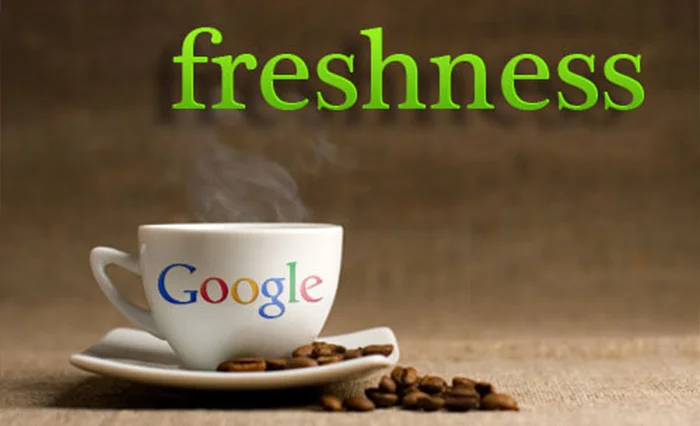Google Freshness Algorithm:What is the Effect of Google Freshness algorithm on site SEO?
Google’s Freshness Algorithm is a search results ranking algorithm that has greatly impacted Google’s search engine. This algorithm influenced the work framework of many content producers and changed the principles of content writing and search engine optimization. You will learn more about this algorithm and how it works in the following.
Search algorithms
When you ask a search engine like Google to search for a specific phrase among hundreds of millions of Internet pages, you will get more information than just related pages. In addition to showing you relevant pages, the search engine also ranks them. This way, you’ll find the pages you’re most likely looking for higher in the results.
The same issue and the issue of ranking (same ranking) of web pages is the scientific basis of search engine optimization, or in short, SEO. The higher your page is displayed, the more people will probably notice you and the more you will be seen. As a result, to be seen better, you need to know how Google’s search and ranking algorithms work.
In 2011, a new mechanism for ranking related pages was introduced, the name of this algorithm is freshness algorithm. It is clear that the introduction of a new algorithm changes the display order of the results. In reality, the same thing happened and something like 35% of the search results (of which 6-10% were the first category and important pages) were changed in the ranking.
Now these businesses and in fact it is better to say all the pages of the internet world should adapt to this new algorithm. But what exactly is the Google Freshness algorithm and how does it work? How important and effective is the Google Freshness algorithm?
What is the Google Freshness algorithm?
Freshness literally means newness and renewal, and as it is clear from the name of this algorithm, with the development of this algorithm, a fundamental change happened in Google. In 2010, it was predicted that humans will produce more information in 2017 than they have produced in the previous 5,000 years. The advancement of technology increases the volume of information more and more, and managing such a volume of information is a big issue.
For this reason, users are probably going to face a lot of unrelated search results that do not have the desired novelty.
According to an important article in the world of information published in 2012, 16-20% of the searches performed every day are for the first time and have no history. In this way, we can guess how up-to-date and recent the searches are today. As a result, in order to answer these searches, they must provide users with up-to-date information.
Suppose a user wants to search for a new work by an artist. Due to the dynamic activity of people, the latest and newest works of artists are constantly being updated. A result that is more recent and newer is much more important than an old result with millions of views and a high rank.
For this reason and due to the high speed of creating information and increasing this speed, a new algorithm and mechanism should be created to help new, fresh and updated pages to be given priority and users to get updated and new results. reach In fact, the algorithm that detects the signals of freshness and up-to-dateness and separates the updated and old pages is called the Google Freshness algorithm.

What people are Affected by the Google Freshness algorithm?
Most of the algorithms and updates to Google are aimed at limiting and making the search space more competitive. In fact, after most updates, many websites lose their visibility because Google does not see them in sync with its policies and standards. But the situation is completely different for the Google Freshness algorithm.
After implementing Google’s Freshness algorithm, many websites that had little chance to be seen were seen quite effectively and became the focus of searchers’ attention. This time, judging the relevance of an internet page and its position among searches was affected by an important and new factor called freshness.
According to Cytometrics, Google’s freshness algorithm has made It like news sites, sports sites, video streaming sites, and big brands. These sites often publish fresh, up-to-date, and regular content. In this way, the sites that prepare new and updated content for their users are undoubtedly the winners in the update of Google’s freshness algorithm.
According to the policies and point of view of Google Freshness algorithm, it is easy to understand that good content and content that is supposed to be seen, should not necessarily have a great impact. If this content is only new and so-called first-hand, it is also a well-known content and much more attractive to users. In general, the board is updated with pages.
In this way, if you are one of the websites that are covering and reviewing an old topic, you will probably get involved with Google’s freshness algorithm. If your content is old, it takes a lot of time to update it, and as a result, the content of your page remains stagnant and is not updated, or is left behind only by the attractive and new content of the same field, your page will not be seen in Google.

How to adapt to the Google Freshness algorithm
The Google Freshness algorithm is a kind of double-edged sword and depending on which side you want to stand on, it has a different impact on your business and online page. At the same time, you can surpass many of your bigger competitors by adapting to the current fast world and with the help of Google’s Freshness algorithm, if you don’t accept this update, you will definitely suffer a lot from the mechanisms of the new age of technology, not just the algorithm.
There are many ways to adapt to the updates of the Google mechanism and the Internet world. But remember that in all these methods, you must follow the latest update policy. You must use a methodology called QDF (Query Deserves Freshness) to keep up with Google’s freshness algorithm.
QDF methodology or method briefly states that searchers deserve fresh and up-to-date results. In that order, news that is hot, famous people who are more famous, coverage of a topic that is more recent, and information that is more up-to-date will have a higher chance of being shown to users.

Operational Solutions for Google Performance Algorithm
After you have read the text so far, the question may come to your mind what is to adapt to the Google Marcers algorithm and to have up -to -date content that Google knows as content to be seen? Here are some operational strategies to meet Google’s expectations after implementing this algorithm.
Review your old content
See your previous content archive. If you go back in your content year by year or in specific intervals, you will find content that has attracted a lot of attention in its time and thus brought a lot of design to your site. Take the time to update and update these content.
The content that is to be updated should be fully updated, not just reassuring. Cyberspace posts generally have dates, numbers, information and parameters specific to their time. If you want to review and re -publish a post, update it. Try to put the information based on the current status so that your content is Fresh.
share it! Increase the volume of your content
The contents and materials that are exchanged in cyberspace and many copies of them are published are prone to novelty and are exactly in line with the goals of the QDF methodology that we explained earlier.
Users like to receive the information they receive regularly from a first-hand source. These publications and the increase in the volume of your content in the Internet world are the indicators of the updating of your content by freshness mechanisms such as caffeine and, as a result, Google’s freshness algorithm.
Do not underestimate the power of virtual space and user interactions. The so-called viral content that spreads like a virus in the virtual space, sends a lot of interaction and conflict from users to your website, and this is exactly what the Google Freshness algorithm wants. Google wants your page to be the focus and destination of users wandering among millions of content.

Tune in to the current frequency!
If you have activities and content writing in a field that is related to a specific industry or technology and science, be sure to keep in mind the ups and downs of this field. Including the key and important events of your business world in the contents and covering the urgent news of the day to any degree can have a great impact on the up-to-dateness of your page.
Users and people today are faced with more information than ever before.
The huge flow of information that reaches people daily is difficult to digest. For this reason, considering information, although small, but new and fresh, can make you the leader and the first person in a market or internet arena.
Use new methods of content production
Using audio, video, video, virtual reality, augmented reality, etc. multimedia tools can add many layers to your plain text website. Each of these layers is prone to attract a lot of attention, which can ultimately prove the freshness and freshness of your web page to the Google Freshness algorithm.
Most of the traffic to your site is from an image or multimedia source. In fact, it may be an image or a video from your website that is recognized as fresh, up-to-date and useful by Google’s Freshness algorithm, and ultimately drives a lot of traffic to your website. This means being seen!
Although each of these tools bring different importance and traffic to your website, and the effect of each one is strong and weak, but in any case, adding different layers to your content is a positive phenomenon that has a great impact on being fresh and up-to-date. Your website is widely known.

Conclusion
In today’s age of technology and the Internet, information goes out at an incredible speed. If your website cannot provide users with fresh and up-to-date results, it is doomed based on Google’s Freshness algorithm updates. On the other hand, you can surpass many of your more powerful competitors in the world of content creation by intelligently choosing content, simply by having the advantage of being fresh and up-to-date.
According to recent Google updates, the structure and basis of classification of Google pages have changed. Based on this set of changes, good content is fresh content. In fact, freshness and up-to-dateness can lead to much more interaction and engagement on your site, which in a word means more visibility of you and your content.
In this content, in addition to introducing the Google Freshness algorithm and its content selection mechanisms, we tried to introduce theoretical and practical solutions to be more compatible with this algorithm. By doing these solutions, you will undoubtedly have an up-to-date page that will be in the center of attention of many users. Just remember that users deserve up-to-date content and incorporate the QFD methodology into your work.

